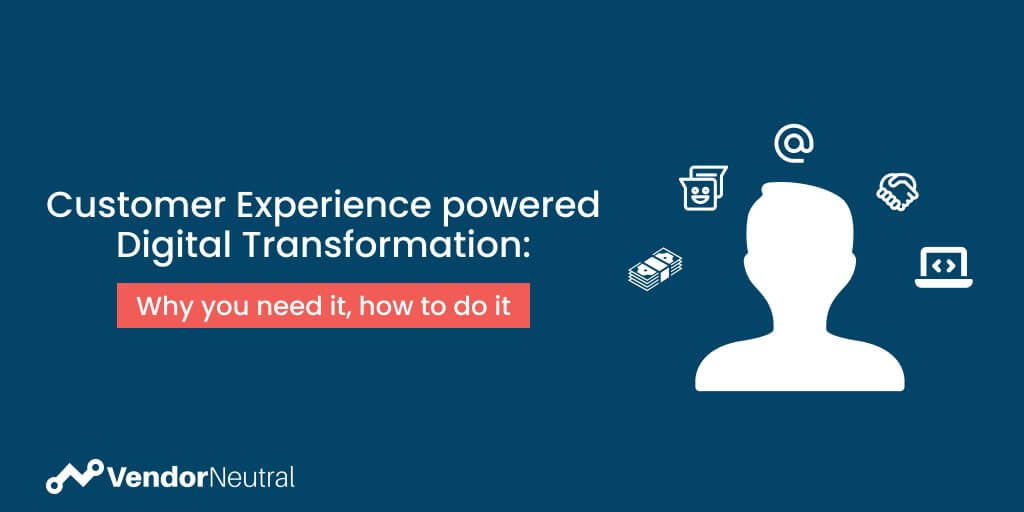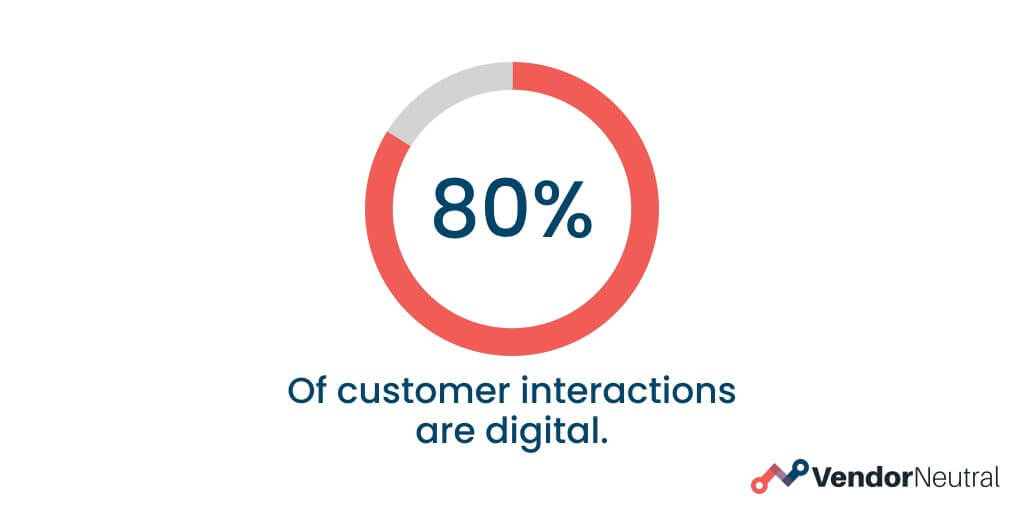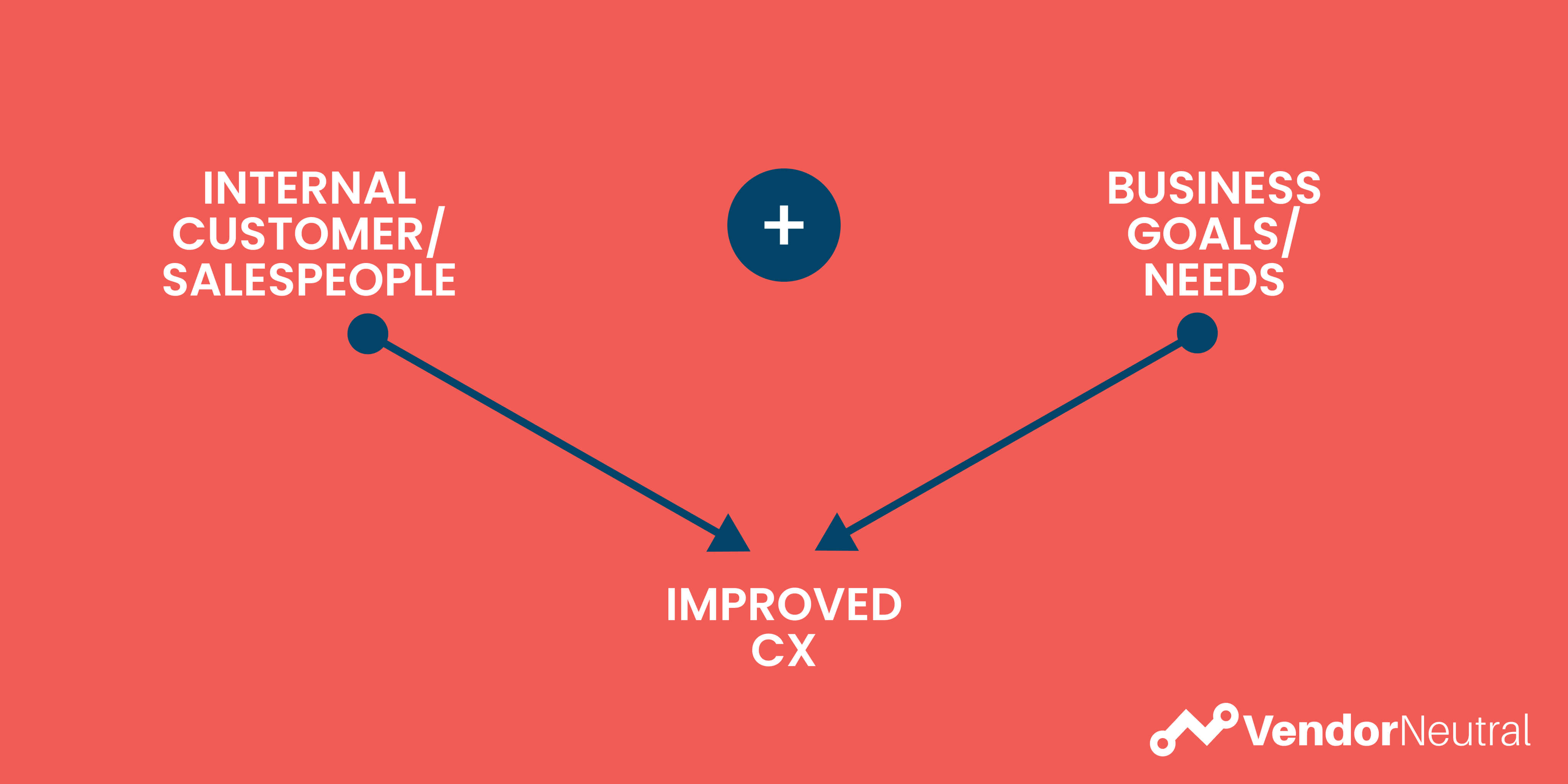Customer Experience Powered Digital Transformation: Why You Need it, How To Do It
Customer Experience powered Digital Transformation: why you need it, how to do it

The customer is king, right? Most organizations would say so. But how many follow through with actions? In the words of Benjamin Franklin: “Well done is better than well said.”
Customer experience overtook price and product as the reason people buy and keep buying two years ago.
So, if you’re leading one of the 89% of sales enablement teams that are launching digital transformation projects this year, ask yourself this: are you starting by looking at the software, or who the software impacts?
The customer experience is not the end result of your organization’s digital ecosystem… it’s the reason for it.
Let’s get into why customer experience must inform every digital project you embark upon – and how you can flip the thinking in your organization to start with the customer experience, and make good on your claim that customers are #1.
Customer Experience Goes Digital
According to McKinsey research, businesses are three times more likely to say that at least 80 percent of their customer interactions are digital when compared to before the pandemic.
Customer experience (CX) has gone digital. You buyers are online, app-native and they’re rating how you’ve kept up.
Whilst traditional CX looks at the overall interaction between a brand and its customers – so all interactions digitally, in person, across any possible given touch point – the rise of e-commerce and omnichannel digital opportunities, means that Digital Customer Experience (DCX) could arguably now be the most important aspect of CX – and research from Forbes reinforces why.
Digital transformation and a focus on customer experience can generate a 20-30% increase in customer satisfaction and economic gains of 20-50%.
If 80% of customers interact with exclusively your digital touchpoints, optimizing these and harmonizing these across channels is vital.
In fact, Forbes again, companies with the strongest omnichannel experiences retain 89% of their customers on average, compared to 33% retention for companies with weak omnichannel customer experience.
"According to McKinsey research, businesses are three times more likely to say that at least 80 percent of their customer interactions are digital when compared to before the pandemic.

Change is the only Constant
To be clear right off the bat – digital transformation with a focus on digital is not a one-time deal.
Consumer preferences change constantly, tech develops, your organization evolves… you will never have ‘finished’ digital transformation if you take a customer-centric approach.
And this realization is a strategic game changer.
The best companies – the ones that understand DCX must be in constant evolution – are the ones that also understand that their strategy is not defined by the CEO, but by the customer.
Given that consumers are willing to spend 17 percent more with companies that deliver great customer service (according to American Express) your organizational hierarchy might need a re-think.
Responsive adjusting and refining tech to match customer expectations and needs sets the best companies apart… and as well as increasing brand loyalty and repeat business and reputation, the benefits feed inward: research shows that 40% of business leaders believe DX with a focus on customer experience has improved operational efficiency.
But this approach delivers more: business insights, connectivity through the entire organization and ultimately higher revenue.
Remember that the bar has already been raised: seamless DCX is standard. Anything less, jarring. Bear in mind that 88% of online shoppers say they wouldn’t return to a website after having a bad user experience.
Consistency of experience throughout a sales journey, across multiple channels – which adds value to customers’ lives is your bare minimum. Your goal isn’t merely to deliver, it’s to delight.
And you’ll be rewarded for it: highly engaged customers buy 90% more frequently and spend 60% more per purchase (compared to the average customer).
But of the $1.3 trillion that was invested in digital transformation in 2019, more than $900 billion was wasted. (Our blog on the wider impact of digital waste explores this topic further.)
We wonder how many of those billion dollar failed strategies focused on the company, rather than the customer…
Analyze - Ask
How do you go about evaluating where the ‘pain points’ exist in your current customer experience?
Analyze the data and ask everyone.
Data – the length of a sales cycle, onboarding times, adoption rates, customer service response times, and on the customer life cycle – can be a starting point to red-flag possible hot spots where frustration for the customer may exist – but it’s by no means going to give you the whole picture.
So speak to your sales teams. Find out what their challenges are, frustrations, pain points. Be curious as to how they work, how they connect with customers… and the feedback they receive from them. Explore what your highest performing salespeople do – and what they do differently to your core performers.
Unsurprisingly, your most valuable insights will come from customers. Cultivate and curate conversations with them: feedback emails, 1-2-1 sessions, polls, surveys, social listening.
Companies make the mistake of assuming that the absence of negative feedback means that everything is fine, or positive… but listen to this: research reveals that, in most cases, customers don’t actually tell you they’re unhappy. In fact, only 1 in 26 unhappy customers actually complain – the rest just never return.
Start conversations with your customers now: don’t take their silence for their support.

2022’s Customer ex trends you cannot ignore
The above will give you insights that will drive your next DX project… but stay alert to the generic customer expectations that are becoming ‘as-standard’ for digital customer experience and what the future state for customer satisfaction could look like. Organizations that are relentlessly curious about changing needs, wants and tech will be able to anticipate the answers here.
Talk to my bot
Beyond self-service, customers want to self-search. Gartner estimates that by 2030 over a billion service tickets will be raised automatically by customer-owned bots. Today, 67% of customers prefer self-service over speaking to a company representative.
Personalization
Whether in personalized mail, name recognition, purchase history or recommendations, the customer likes unobtrusive personalization and is broadly happy giving their data to achieve it: 80% of consumers are more likely to buy from businesses that personalize their experience.
Omnipresence across channels and platforms
Customers want to work across the channels they choose, and for the patchwork of digital touchpoints to be brought together seamlessly… whether in sales, communications, or post-sales services. Disney Resorts are the standard-bearers here: taking omnichannel to the next level. Their mobile app EXPECTS users to connect whilst they’re actually on site at the resorts: buying tickets, pre-ordering food and seeing real-time data on queueing times to make the experience magical. Things not quite right? Users can engage with real-time support or real-life reps: all of whom understand the customer’s experience thanks to a unified database.
Customers want connection.
Customers are increasingly asking for the familiarity of messaging services they already use like Whatsapp: where 68% of this app’s users believe it’s the best way to engage with a brand.
Into AI
1 in 3 business leaders say using AI to move from automation to prediction will be the next big consideration in driving ROI. Businesses that harness the potential of AI to predict customer needs and delight customers at scale, will stay ahead of the curve
Their experience should define your ecosystem
Your employees are key to your organizational ecosystem, right? They need care, attention and you provide it. You also strive for their development – and consciously explore and nurture their potential.
See software – and the methodologies you build around it – in exactly the same way: employees, tech, strategy and process are moving and changing parts in a digital ecosystem.
This term matters: as reframing your mindset to view your operations as an ecosystem, will reframe your actions.
Rather than managing it, you tend to it. Rather than buying it, you cultivate it. View your organizational ecosystem as something that will thrive, survive, or die on the care you give it. And acknowledge that this care is constant.
Any DX on the back of CX research will only lead to successful adoption and impact if you embrace your organization’s life-long commitment to sustaining it, and evolving it.
Consistency around training, adoption, feedback, support and team buy-in is crucial. And that doesn’t happen in 90 days.
Onboarding is over, everboarding is as standard.
A healthy digital ecosystem returns more than a great set of processes and happy sales reps: it delivers the point of your entire endeavor… to nurture the happiest customers and generate the highest revenue.
More than two-thirds of companies now compete primarily on the basis of customer experience – up from only 36% in 2010. In their future of CX report, PwC surveyed 15,000 consumers and found that 1 in 3 customers will leave a brand they love after just one bad experience.
Customer experience driven digital transformation is no quick fix, but it’s clearly vital to how you strategize for your businesses’ growth. And the co-constructed digital experience that is produced will deliver returns for your organization, if the tech is underpinned by your commitment to both its adoption and ongoing development.
If you’re taking the first step on the road to digital transformation, a map is going to be useful: and we think ours will steer you in the right direction. Download our Sales Technology Buying Roadmap for a step-by-step guide to selecting the right tech.
We can also support your analysis of the customer journey and your sales teams’ pain points – as well as advise on how to nurture the ecosystem you build through everboarding, systemization and bespoke consultancy.


